Source: designboom (“john craig freeman invites us to virtually visit the wet market of wuhan in augmented reality.” May 29, 2020.)
through the emergent technology of augmented reality, artist john craig freeman invites viewers worldwide to virtually visit the wet markets of wuhan — the place where COVID-19 is believed to have originated. in the development of the transformative, at-home installation, the artist makes use of an immersive portrait of wuhan he had taken in 2016. now, remote visitors might walk through a full scale projection of the market. freeman introduces this experience as a continued body of public work that reveals where the forces of globalization are impacting the lives of individuals in local communities. the work seeks to expand the perception of ‘public’ by exploring how digital networking transforms a sense of place. experience the augmented ‘wet market, wuhan.’
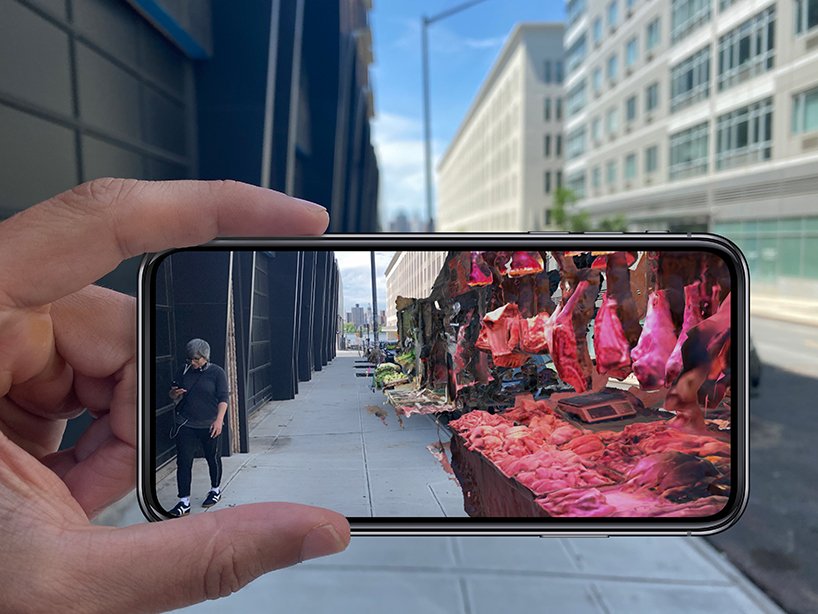
during the development of the augmented reality project ‘wet market, wuhan,’ artist john craig freeman traveled to the city of wuhan in 2016. the trip was part of the U.S. state department’s cultural diplomacy program, ‘zero1 american arts incubator.’ the project serves as a part of an extensive body of work which documents the rapidly changing city and sheds light on the complex and nuanced historical culture it holds. today wuhan has become a household name as the epicenter of the COVID-19 pandemic. together with virtual technology and freeman’s unique work, audiences have the opportunity to immerse themselves in the historic area.
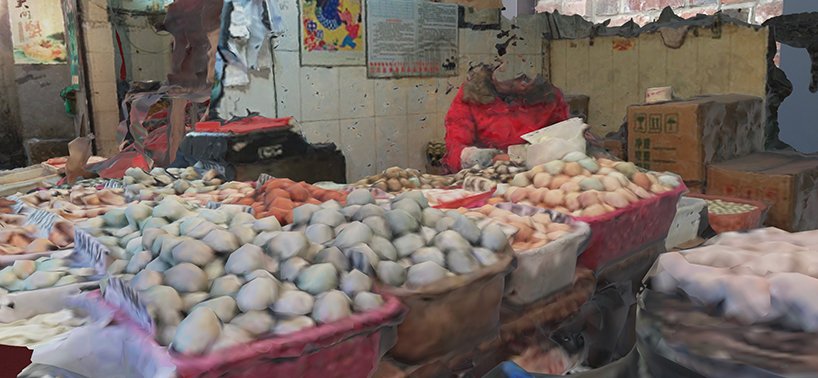
to capture the desired augmented reality vision of the wuhan wet market, john craig freeman makes use of a process called photogrammetry. with this strategy, the artist stitches together thousands of individual images into one single three dimensional file. the resulting portrait explores the boundaries between realistic portraiture and expressionist representation. the artist explains that his work focuses on capturing a singular moment in time and does not wish to participate in the current political accusations of wuhan as the target of public health failings. freeman comments: ‘using this ancient city and its local customs as a political cudgel does nothing to solve the problem caused by the threat of global pandemic. only science can solve these issues.’
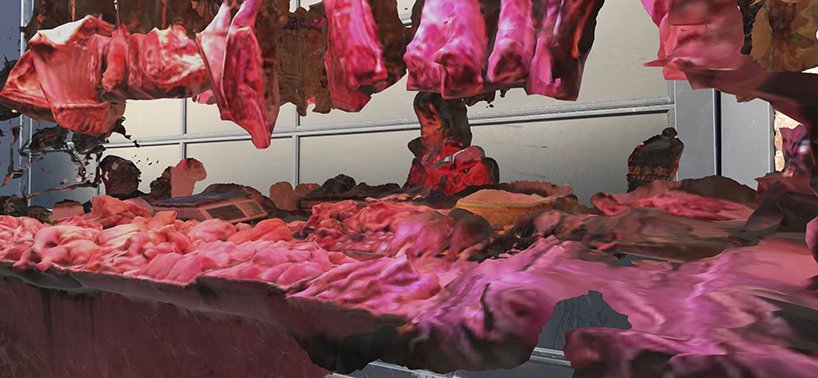
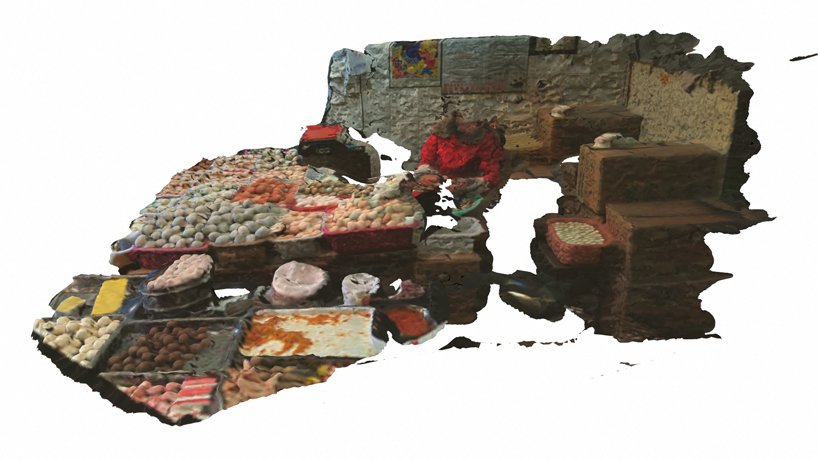
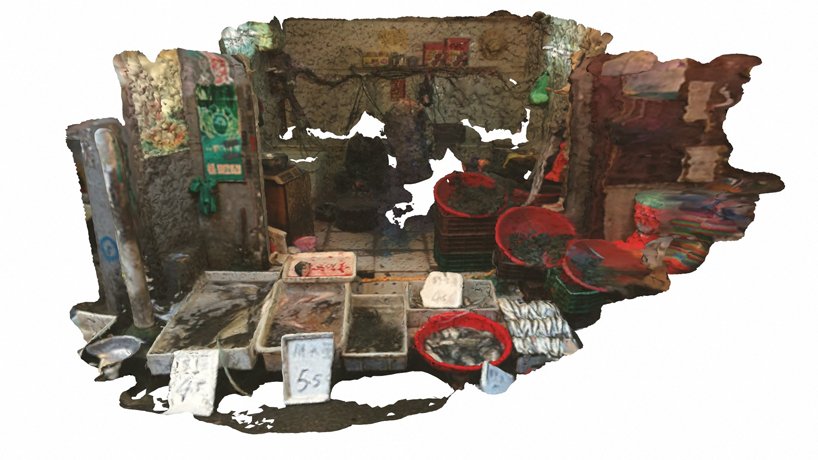
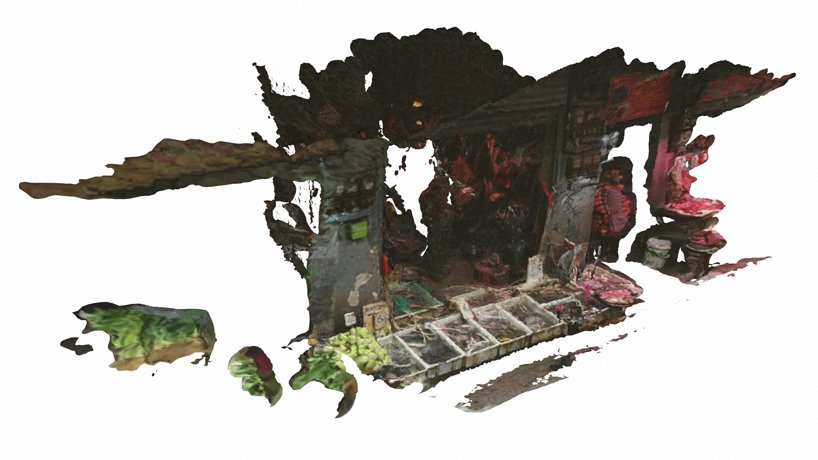
project info:
project title: wet market, wuhan
artist: john craig freeman
platform: allworld.io | @allworld.io
ZERO1 Awarded California Arts Council “Youth Arts Action” Grant
Source: Jeonnam Daily (“Citizens have a direct say through 'New Media Art',” by Jin-sil Choi, May 29, 2019. Translated from Korean.)
It was a spring day in which the flowers were gradually beginning to fade after blooming. I had been tirelessly pursuing the expression of my story through a medium called new media art. The 2019 American Arts Incubator workshop, although brief, was an inspirational and exciting time. As a project coordinator, I know that the feeling was shared amongst all of the participants.
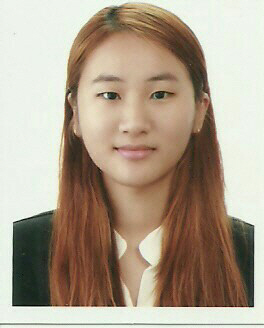
The workshop was organized by the US Department of State and ZERO1, leaders in Silicon Valley’s art and technology scene. The organizations have collaborated since 2015 to send US artists around the world and conduct workshops.
The Gwangju Cultural Foundation was chosen as the intermediary to help locals with diverse backgrounds access workshops. The program enabled participants to receive guidance from an experienced new media artist and professor at UCLA. Fifteen participants consisting of students, those new to artistic practices, and artists had the pleasure of expressing their ideas through the medium of new media art.
Even for participants with experience in the arts, the workshop posed the new challenge of expressing themselves in a third language, coding. However, the lead artist Lauren McCarthy, developed the p5.js software so that anyone could easily understand code. Thanks to the support allocated to each group, the participants became accustomed to the basic ideas, bit-by-bit. Despite the short amount of time and technological challenges, each group created their own artworks. With determination and a strong desire to learn, each team of participants was able to produce a meaningful piece that inspired audience members.
Because these artworks were produced by regular citizens, the pieces were relatable and accessible to the audience. One piece showed a family enjoying their national holiday together by playing Yut Nori, a traditional game. This work reminded viewers about the importance of cherishing family memories.
Another artwork that received praise depicted the tensions between a concerned mother and her 20-year-old daughter. Members of the audience were particularly drawn to, and impressed by, the interactive elements of this work. By incorporating projection mapping technology, the audience could make gestures that influenced the screen. This contributed to a meaningful experience, as each guest shared in the experience of expressing themselves through new media art.
This program demonstrated that new media art is able to express significant stories and ideas. More importantly, it illustrated that the creation of such content isn’t exclusive to experts and established artists, but to anyone who has feelings and opinions to express. This is in line with UNESCO Creative Network's educational values, aims, and objectives. Now there are ways in which people can create evocative and well produced works to express their stories. As a program, it illustrated a lot of possibilities in a short period of time, all while suggesting the direction of future media art.
If these local projects continue to develop and become established into our educational programs, it would be a great resource for citizens. I will do my best to support that development.
Source: Gwangju Daily News (“Do you think of 'media art' as a fresh concept?,” by Jeong Nang Choi, May 23, 2019. Translated from Korean.)
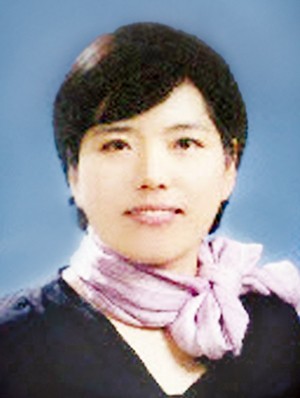
I recently had a special experience involving emerging media art. It was through the American Arts Incubator program, hosted by ZERO1 and the US Department of State. They collaborated with the US Embassy and Gwangju Cultural Foundation to carry out this unique month-long event. It was a workshop in which we discussed matters of societal impact such as social inclusion. As a group, we sought to express our thoughts on these issues through media art techniques.
Many people who have little-to-no experience in the arts, like myself, participated in this workshop because it welcomed ordinary people and artists alike. The artist who lead the workshop was Lauren McCarthy, a professor and researcher at UCLA. She began by delivering a presentation on a coding program that she designed called p5js. By entering data into this program, it enables the recognition of facial expressions, body positions, and objects.
After completing the basic coding course, the participants were divided into teams. Then the teams began to develop their projects in line with the social inclusion theme. They asked one another: “Is there a moment when I was marginalized or excluded?” They proceeded to dig into what the experience was, when it happened, and why. Following, they began a conversation about when they had a sense of belonging or being welcomed.
It was from these discussions that they reached a general consensus and began drawing up their team projects. Due to the diverse range of ages and life experiences among participants, ideas were in a lengthy state of back-and-forth debate. Lauren facilitated and helped to guide participants during the process.
After much intensive effort from the members, the four teams completed their art works. The first team created “Ill-Iteracy”: a system where analog and digital devices could successfully coexist. Team two made “I LOVE YOUt” which focused on restoring mutual understanding and respect between community members through the traditional Korean game, Yut Nori. The third team used surveys to ascertain how people felt and then created digital environments to overcome anxiety and emptiness in their piece “Feel-Fill”. The fourth team “How to Understand Your Daughter”, took on the task of finding unique perspectives on parent-child conflicts.
The four works were displayed for exhibition at Artspace 338 for about 10 days. The opening began with a briefing on each piece, presentations on the works, a panel review, and finally, audience questions that led to intense and in-depth discussions.
Through this workshop, I had the opportunity to meet emerging media artists who live in Gwangju and abroad. I felt pride and contentment in the fact that I was given the chance to collaborate with world-class artists and researchers. I also felt pride in being a part of Gwangju city, 'the pillar of innovative media art'.
The finished works will be displayed and presented again at a special exhibition in the 2019 International Symposium on Electronic Art (ISEA) that will be held for a week at the Asian Culture Center. I hope that researchers, viewers, and artists alike will come to see what kind of emerging media art was produced.
Source: Bloomberg Media Group (“Amy Karle Visualizes Internal Experiences through Bioart – Brought to you by Hyundai,” posted on YouTube by Art and Technology, July 10, 2018)
Source: Art Ukraine ("Tiare Ribeaux: ‘New Media as a practice is a way to work without boundaries,’" by Anita Kovalevska, April 04, 2018)
On March 29, the exhibition “Emergent Tributaries” has opened in the space of the creative community IZONE (Kyiv), which summarizes the American Arts Incubator in Ukraine project, which lasted during March under the leadership of the American media artist Tiare Ribeaux. The exhibition presents five projects from 32 Ukrainian artists who use speculative design, imagining the future of architecture, social institutions and ecosystems in Ukraine and along the Dnipro River. ArtUkraine spoke with Tiare about working in the Ukrainian context, the practice of new media and radical inclusivity.
How did your cooperation with American Arts Incubator and IZOLYATSIA start?
My colleagues who manage the American Arts Incubator program made a trip to Ukraine last fall to meet with arts organizations and galleries around Kyiv, and they found that IZOLYATSIA was the best fit for this international exchange, and I couldn’t agree more! IZOLYATSIA’s mission is very much in alignment with our own, and I feel this has been the perfect combination of organizations to create something bigger than ourselves, with socially engaged art works and community engagement.
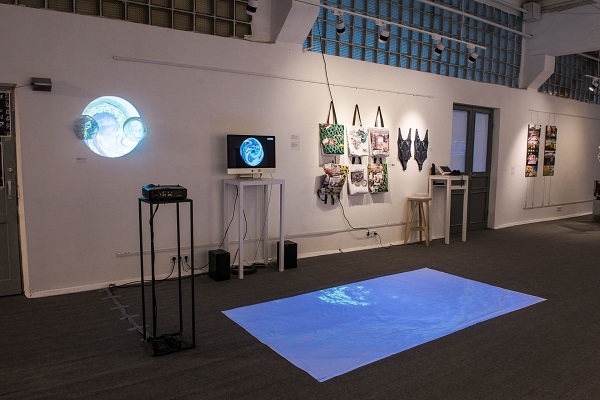
What is the concept behind the American Arts Incubator project?
American Arts Incubator (AAI) is an international creative exchange program that utilizes community-driven digital and new media art projects to instigate dialogue, build communities, bolster local economies, and further social innovation.
American Arts Incubator is a hybrid training lab, production workshop, and tool for public engagement. AAI, at its core, is a cross-cultural exchange of ideas that showcases artists as engaged and innovative partners in addressing social and environmental challenges.
Which mediums do you prefer to work with as an artist and why?
I am a hybrid and new media artist, and have worked with a lot of different mediums — most recently I’ve been working with digital textile design, 3D modelling (digital sculpting), 3D printing, Augmented Reality, and browser-based art. I have a background in bio-technology and have been recently the most interested in combining my background in biology with the arts.
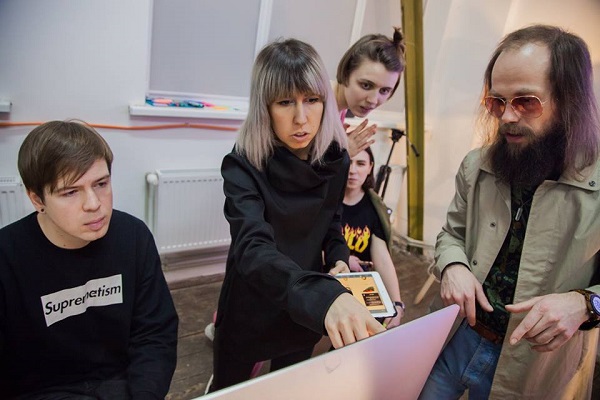
What can you tell about the project you’re currently working on? What is the subject of your research here in Ukraine?
Here in Ukraine I’ve been interested in the relationship between the Dnipro River, what role it plays in the lives of the people in the city, the economy, energy, as well as the pollution in the river. In my research I found that there are blue-green algal blooms that happen in the Dnipro when the weather gets hot. This type of pollution is something I studied in Puget Sound when I was working in biotechnology, as it was also happening there and is a worldwide phenomenon caused by industrial runoff and global warming. My project uses laser-cutting technologies to create intimate portraits of the river, and integrates a microbial fuel cell and a speculative algae bioreactor, to convert this specific type of algae/cyanobacteria into energy to light the river portraits. For this exhibition I also asked the participating artists to consider speculative future architectures along the Dnipro river and objects that consider the problem of the pollution in the river while using new media technologies - so you will see that there are works using 3D printing, digital textile design, projection, and more that explore this topic in ways that also relate to the cultural heritage and identity.
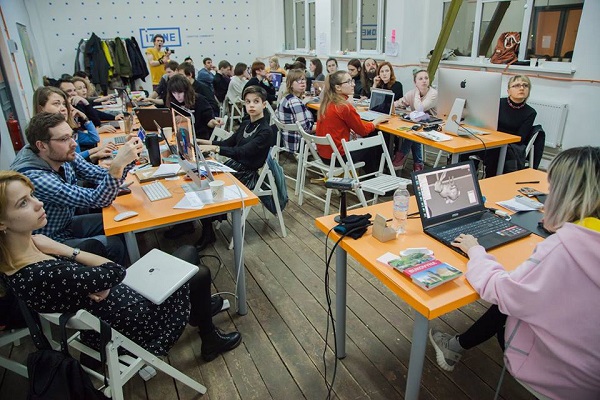
What were your requirements for the participants in the workshops you lead?
To have some familiarity with media art or interest in using new media or digital technologies to expand their current work. And definitely, a positive attitude and a willingness to engage in collaborative works was important!
What purpose does the art surve in the modern world (if it does at all)?
It reframes how we view the world and helps us to envision alternate realities and futures.
How did the new media become the subject of your interest as an artist and why?
New Media as a practice is a way to work without boundaries, — it’s really a way to work without limitations using digital tools to expand any medium. As a hybrid media artist this is really appealing to me as it expands the ways I can express myself as an artist, as well as the means in which to create my work.
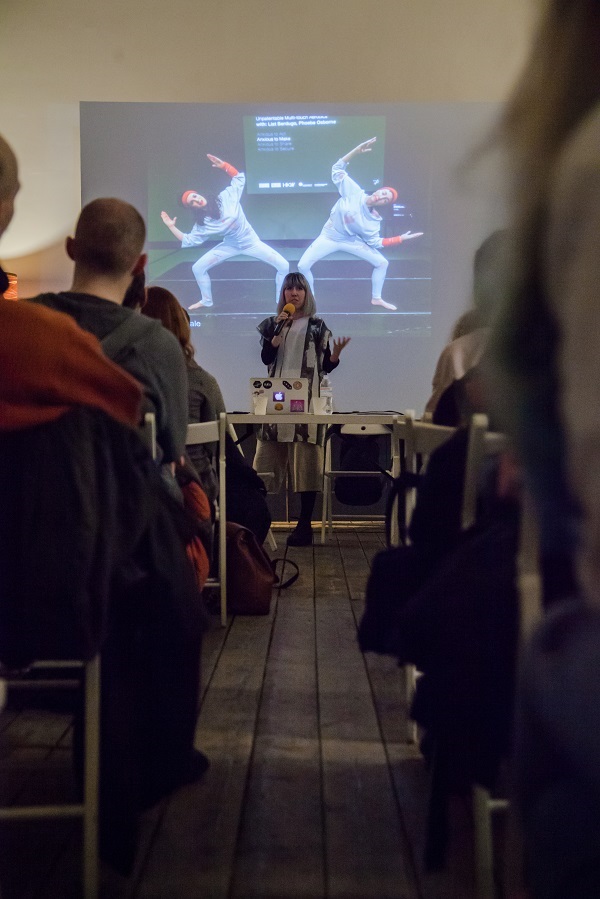
What topics does your gallery B4BEL4B work with?
We are a new media gallery that works with underrepresented artists, who discuss social issues important to them and the communities in Oakland and the surrounding areas, as well as our relationships to technology and how technology affects us as humans, and is changing the landscape of both our physical and digital lives.
What is ‘radical inclusivity’ and how is it different from simply the ‘inclusivity’?
Radical inclusivity looks beyond to include people from all genders and races and making sure to provide a safe space for them to showcase works and also speak about their work in whatever shape or form they wish, without limitations.
What is your take on technologies and their rapid development?
I think it’s an extension of nature and rapid evolution, like a rapid outgrowth of our limbs. We are increasingly becoming more hybridized with our technologies and the lines between the physical and the digital will continue to be blurred. For me, coming from Hawaii and growing up very close to nature, I feel I have to always remember to go back to it — which is why I’m interested in incorporating living things in my future works.
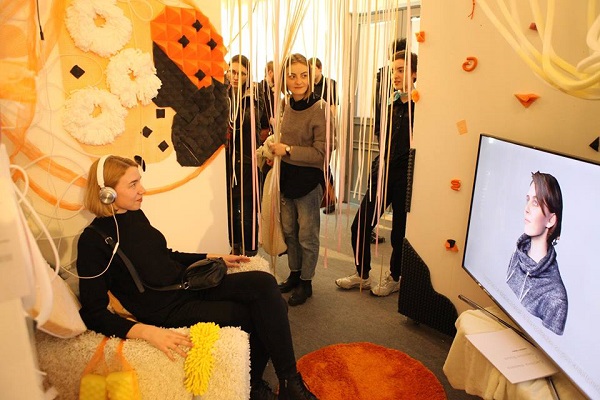
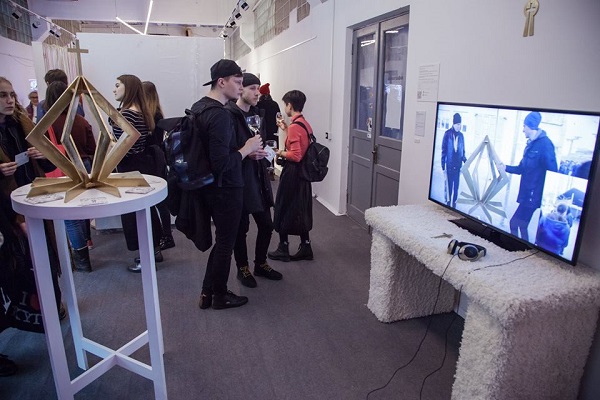
Considering the physical distance between our countries, looking at America from here and judging through the local Ukrainian experience, your country seems undoubtedly quite a liberal one, despite the rise of the right wing movement all over the globe. With your aim to encourage ‘critical dialogue’ within your art institution, have you ever faced social disapproval or misunderstanding and (if you did) what was it about?
I would say yes, there is a lot of freedom for radical, experimental and liberal expression in the Bay Area, San Francisco, and other big cities in America, but there are small towns that still face this difficulty. In Oakland there are some restrictions around what we can do as a space and needing certain permits to hold events which we have to pay for, so things aren’t are free as it seems they can be here in Ukraine - there is still this raw nature to the arts scene here that is very fresh and inspiring. Although I heard that there was a feminist art show, talking about the female orgasm here in Kyiv, and some conservative men tried to shut it down. I can’t imagine that ever happening in America. But after the recent elections, there were some other galleries in San Francisco that had right-wing extremists throw toxic gas into the gallery just because it was a left-leaning political exhibition. So things are changing in America too. Hopefully things will shift for both countries to allow for more freedom of expression in the arts.
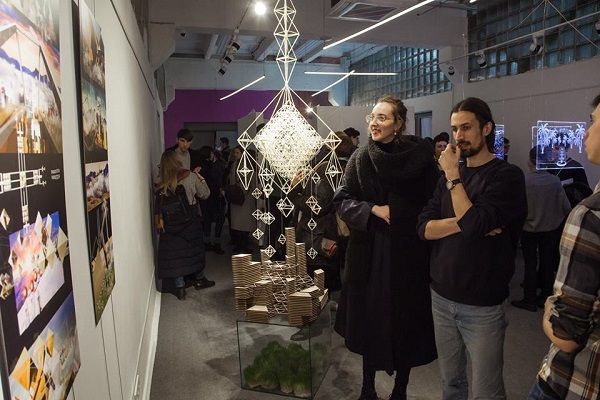
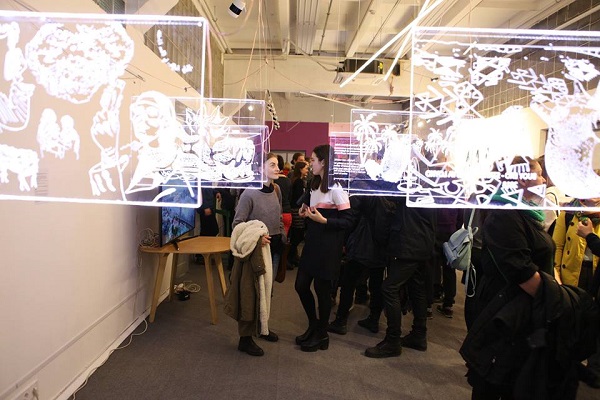
Would you say that artists and galleries in America feel free to talk on provocative topics nowadays? And what topics can be considered provocative in modern America?
Yes, but increasingly it’s hard for something to be provocative now! I would say it’s important to show more women and african american artists in general as they make up such a small percentage in the art world, when they are making really important work and their voices often go unheard.
What are the phenomena in the Ukrainian art world that you find the most interesting? Especially comparing to your experience as an American-based artist and curator?
I’m surprised by the richness of the culture here and the passion and work ethic of artists here. All of the artists I’ve been working with were tireless and worked very hard over this intensive short period to create well thought out and well executed projects.
I think also because of the newness of the independence of this country (just 26 years) artists are eager to express themselves in ways they couldn’t or ways that were frowned upon until recently, which is an exciting space to be in.
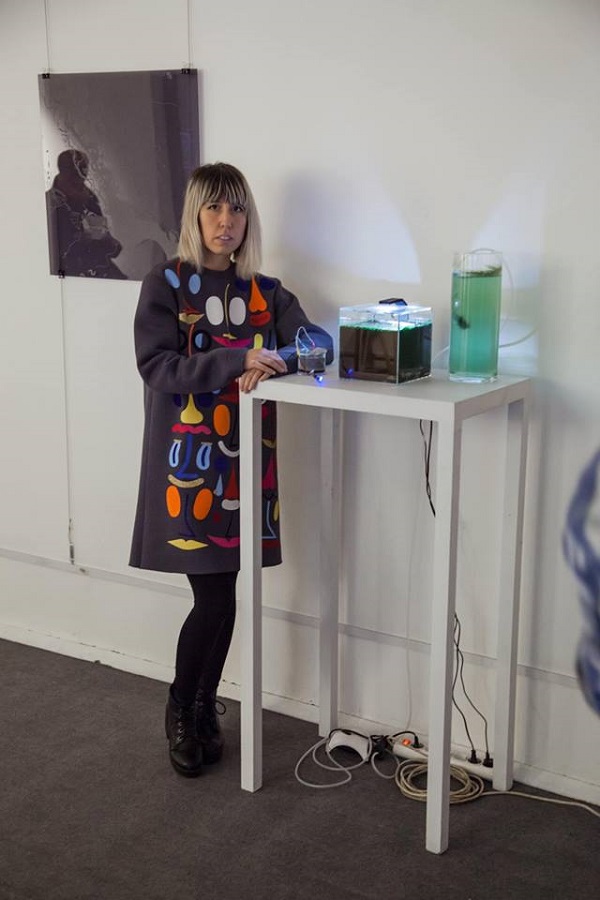
Source: UATV (“Сучасне мистецтво,” posted on YouTube by UATV Channel, March 31, 2018)
Source: The New Indian Express ("Voicing gender equality," by Express News Service, March 19, 2018)
The ‘Amplified Voice Programme’ workshop by American Arts Incubator displayed prototypes on gender issues
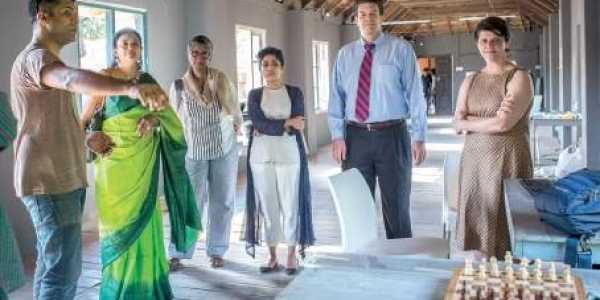
KOCHI: The three-week sound workshop Amplified Voice Programme held at Pepper House witnessed a wide range of prototypes that boldly spoke on gender bias issues and became a visual treat to the spectators.The focus of the sound workshop, which commenced on February 22, was ‘Gender Equality.’ The educational series of workshops was organised by American Arts Incubator, an initiative of the US Department of State and ZERO1. It was held in partnership with Kochi Biennale Foundation (KBF) and Sacred Heart College, Thevara.
Four teams, comprising 16 members, came up with their interesting prototypes which gave prime importance to audio to tackle gender-related issues.US-based sound artist Laura Wright, who led the workshops, said that she decided to take Gender Equality as the theme after participating in the Women’s Day march at Seattle.
‘Axia’, an interesting prototype developed by one of the teams, emphasised the art of listening and conversation through a revolving globe placed in a flat triangle, with three microphones at its corners.
The team members said it can be set up at public places, offering opportunities to males, females and gender minorities alike to speak out their woes which usually go unheard as they lack enough listeners for their queries.
‘Bindu’, another prototype, underscored on breaking the stereotypes by recording the daily lives of three women who chose to smash the barriers by venturing into those uncharted fields confined to men. Selin, one of them, works at a crematorium in Kochi while Rekha is a fisher-woman and Jyothsana Padmanabhan is undergoing training to become a Hindu priestess. The team also intends to take it to the schools to tell children how to break the stereotypes.
Yet another team travelled with their 'secret bag’ with microphones attached, which will record the issues of transgenders. This will convey those issues which they shy away from communicating to the world and makes the society aware of it. On the valedictory function of the workshop held on Friday, American Consul General Robert G Burgess said “In arts, we raise fundamental questions and challenge the way we think and they enable us to look at issues from a different perspective.” Manju Sara Rajan, CEO, KBF also attended.
Source: UTV Televisora Universitaria (“Beatrice Glow and Ana Cachimuel appear on La U en Casa on UTV in Ibarra Ecuador,” posted on YouTube by alecz1k, March 19, 2018)
Source: The Hindu ("An amalgamation of artistic sensibilities in Kochi, says U.S. envoy," by Special Correspondent, March 17, 2018)
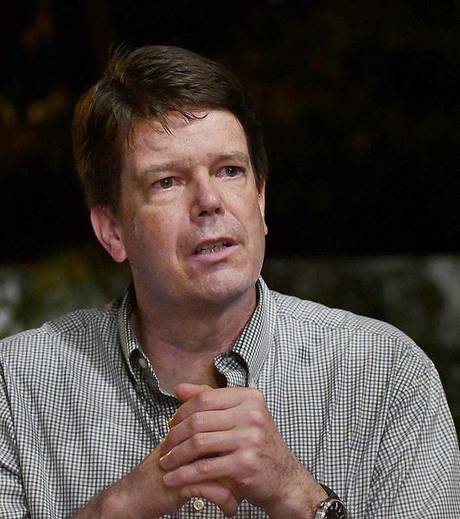
Consul General of the United States in Chennai, Robert G. Burgess, said here on Friday that Kochi witnessed an amalgamation of artistic sensibilities with artists approaching their medium as agents of social change by raising fundamental questions and challenging conventional thinking.
He was speaking at the closing of the ‘Amplified Voice Programme’, an educational series of workshops organised by American Arts Incubator, an initiative of the U.S. Department of State and ZERO1 in partnership with the Kochi Biennale Foundation (KBF) and Sacred Heart College, Thevara, at Pepper House in Fort Kochi.
The focus of the three-week sound workshop, which began on February 22, was ‘gender equality’.
“In arts, we raise fundamental questions and challenge the way we think and they enable us to look at issues from a different perspective. Besides, an endeavour of this sort also helps forge ties between the United States and India,” said Mr. Burgess.
Four teams comprising 17 members came up with their interesting prototypes which gave prime importance to audios to tackle gender-related issues. The U.S.-based sound artist Laura Wright, who led the workshops, said she decided to take gender equality as the theme after participating in the Women’s Day march at Seattle.
Separately, during an interaction with the media, Mr. Burgess said there had been a rise in the number of Indian students studying in the U.S. While there could be fluctuations in the year-on-year figures, looking at a five-year period, there had been a steep increase in the number of Indian students in the U.S. “The latest available figures, pertaining to the year 2016, suggest there were 1,86,000 Indian students, most of them pursuing masters-level programmes,” he said.
Most students were doing science, technology, mathematics, engineering and business. Mr. Burgess was in town in connection with the visit of a 14-member Fulbright-Nehru U.S. university delegation to the city. In Kochi, they visited the Cochin University of Science and Technology, Kerala University of Fisheries and Ocean Studies, Sacred Heart College, and the Centre for Public Policy Research primarily to examine areas for “potential partnership and collaboration in academic research and studies”.
Source: El Norte (“Artista neoyorquina dará taller a gestores culturales de Otavalo,” by Tupac Lema, March 17, 2018)
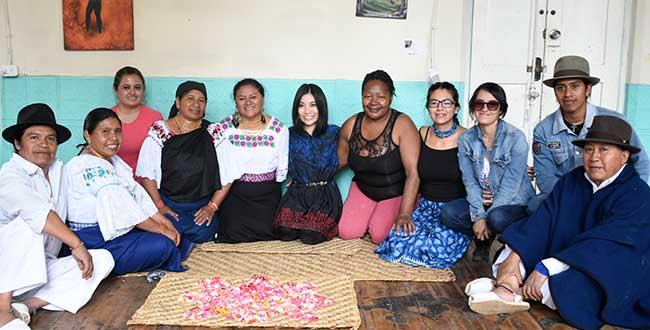
Conocimientos. El taller es organizado por American Art Incubator Ecuador, Zero 1 en asociación con la oficina de asuntos educativos y culturales de la embajada de los Estados Unidos y Yarina Casa de artes. “El objetivo del taller es relacionar el arte con la comunidad y la tecnología Beatrice será la facilitadora para desarrollar y mantener cada uno de los proyectos presentados”, explicó Ana Cachimuel, coordinadora de Yarina, Casa de artes.
Invitada. “Estar en Otavalo es una gran inspiración, he visto que la Casa de artes y el museo Otavalango tienen un compromiso muy serio con la comunidad.
Los habitantes de estas comunidades nos han dado un ejemplo de resistencia. Los norteamericanos tenemos mucho que aprender de lo que están haciendo aquí”, dijo la artista norteamericana que dictará los talleres por cuatro fines de semana consecutivos desde este día.
La capacitación estará relacionada al uso de tecnologías como internet, realidad virtual, realidad aumentada, entre otros.
Source: Voice TV (Tonight Thailand on Facebook Live, June 23, 2017, Mention at 1:24:00)
LIVE! #TonightThailand คืนนี้พบกับ
- พลเอกประยุทธ์ จันทร์โอชา นายกรัฐมนตรีและหัวหน้า คสช.สั่งห้ามนำตัวผู้ต้องหามาแถลงข่าว เพราะถือเป็นการละเมิดสิทธิมนุษยชน ขณะที่กระทรวงยุติธรรมขานรับทันที
- รองนายกฯวิษณุ เครืองาม ชวน อภิสิทธิ์ เวชชาชีวะ แชร์ประสบการณ์ที่พรรคประชาธิปัตย์เคยทำระบบเลือกตัวแทนพรรค-ไพรมารีโหวต แล้วไม่สำเร็จ
- ราชดำเนินเสวนา "85 ปีประชาธิปไตยไทยจะไปไหนดี?" สะท้อนภาพประเทศไทยหลังการเปลี่ยนแปลงการปกครองและอนาคตประเทศไทยต่อจากนี้
Source: Soy502 ("Balam Soto, guatemalteco que fusiona la tecnología y el arte en EE.UU.," by Selene Mejía, April 06, 2017)
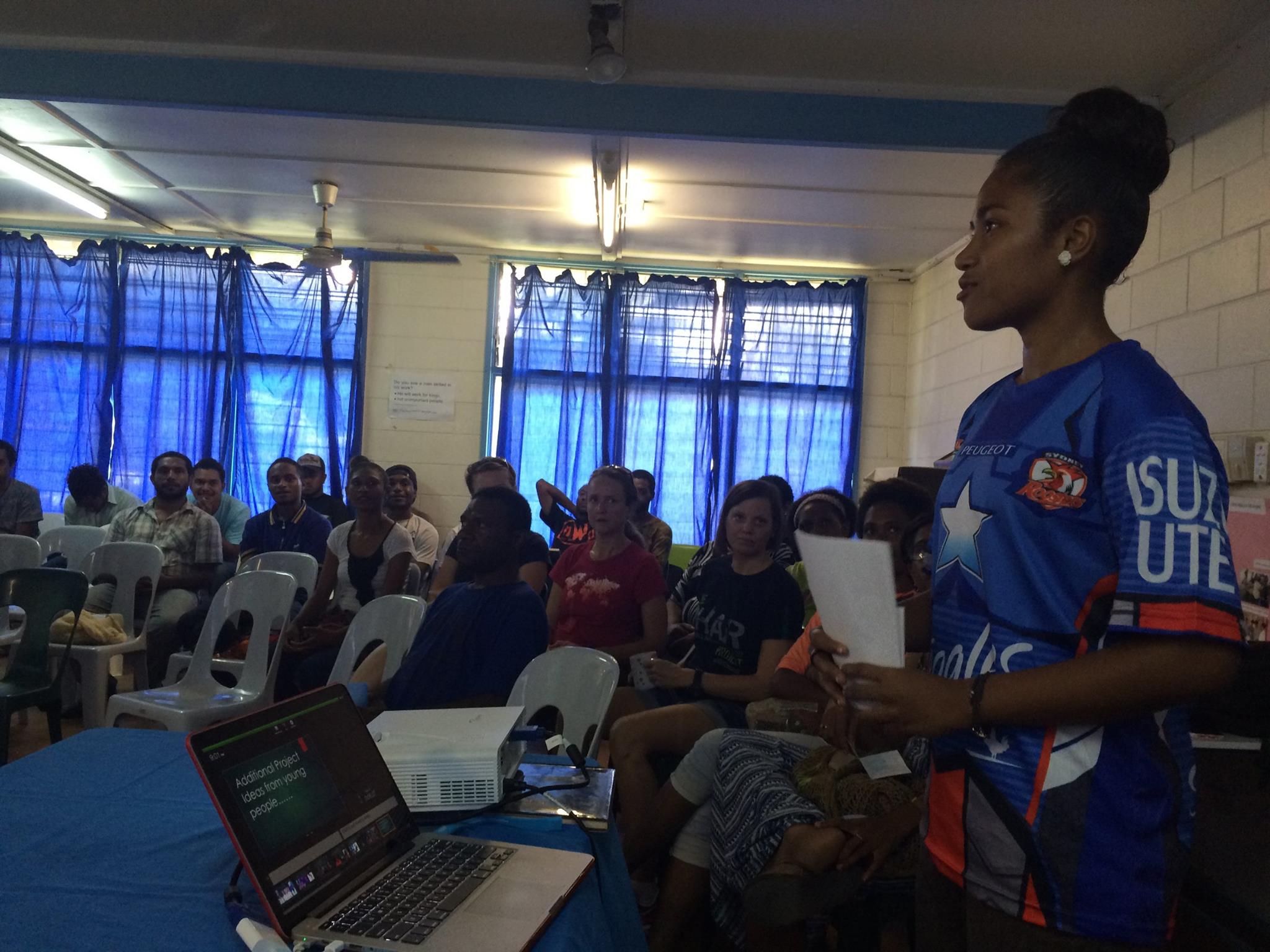
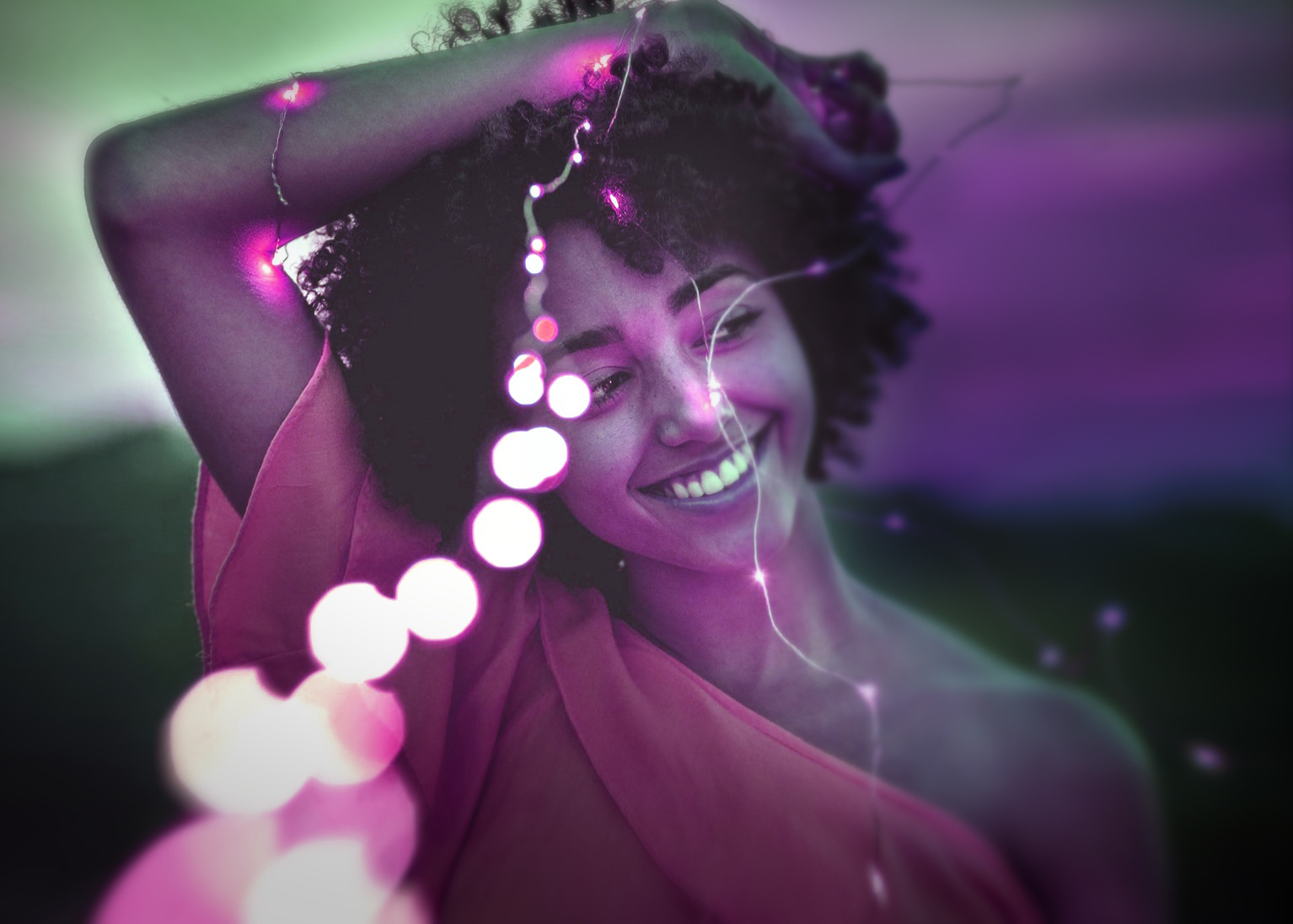


Ama el arte desde la infancia, cuando jugaba con los restos de madera dejados por su abuelo carpintero. El barro también fue su aliado para hacer esculturas. Su nombre es Balam Soto y es artista de nuevos medios, disciplina donde encontró su manera de expresarse.
Tras su paso por la pintura y al finalizar su carrera de Antropología, se mudó a Connecticut, Estados Unidos, donde gracias a su curiosidad y perseverancia fusionó la tecnología (programación informática) con lo artístico.
“La pintura ya no me llenaba, así que aprendí a usar la computadora. Me tomó como un año poder implementarla a lo que quería hacer” Balam Soto, artista de nuevos medios. Su nombre ya suena en las principales galerías del país norteamericano.
Una de sus piezas es la Exp.Inst.Rain y se exhibe actualmente en la BAM (Brooklyn Academy of Music). Es llamada así porque fue inspirada por los sonidos de la naturaleza: "Cuando la terminé era una noche lluviosa", dijo su creador en una entrevista a The New York Times. La obra está hecha con plexiglás, madera, sensores, pequeñas luces y otros materiales, reflejo de su amor por la música electrónica.
Exp.Inst.Rain es una especie de instrumento musical que al tocarse genera sonido, pero no como un piano. "Te garantizo que nadie tocaría las teclas si fuese uno, la gente tiene un miedo natural al creer que necesita saber de música para acercarse a los instrumentos cotidianos", explica.
"Desarrollo piezas con las que el individuo se conecta, la persona que se acerca a mi trabajo debe sentir que es invitada a tocarlo, sin que sea prohibido o se sienta obligado a hacerlo. Debe obedecer a su curiosidad al usarlo, la reacción de los espectadores es la magia del arte interactivo", afirma.
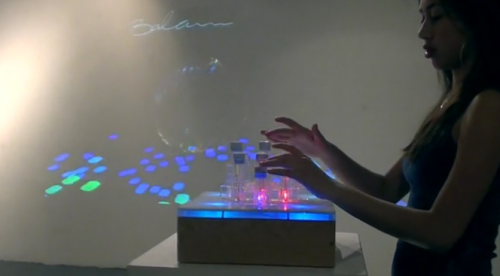
Soto visitó recientemente Guatemala, a través de la organización ZERO1, con la beca llamada American Arts Incubator, un programa de arte digital internacional que funciona desde 2014. A través de ella realizó un taller para compartir sus experiencias a jóvenes entusiastas. Su enseñanza consistió en desarrollar un controlador, armarlo y programarlo para ser aplicado en lo que se desee.
Su más reciente obra consiste en la imagen de un cubo que flota en una especie de jardín. La figura se proyecta en una tela de 3x3 metros, la persona toma una estructura física y juega con ella. Los sensores llevan información para que todo el cuarto se mueva, permitiendo que el espectador se sienta inmerso en él.
Balam vive desde hace más de 2 décadas en Estados Unidos y cuenta con 8 años de carrera artística, pero no ha sido fácil. El especialista en arte interactivo cuenta a Soy502 que su trancisión a esta nueva vida fue muy dura:
"Prácticamente tuve que reinventarme, pensarlo todo de nuevo. El mundo del arte en Estados Unidos es muy competitivo. Seguía pintando, pero no puedes imaginar cuántas puertas me cerraron, pasé años muy difíciles, especialmente porque estaba en un lugar nuevo y el idioma era un obstáculo. Llegó un momento en que me dije: 'Ya no quiero hacer esto, voy a dejar el arte'. Pero luego me di cuenta que este es el fuego que me impulsa; reflexioné y comencé a actuar, me enfoqué en hacer lo que quería, en dar a conocer mi trabajo. Esto me hizo moverme a la tecnología. Cuando cambié mi actitud, las personas comenzaron a tomar mi trabajo en serio. Muchos curadores me ayudaron, aprendí que los negocios son muy útiles en el arte y comencé a aplicarlos a mi trabajo".
ADEMÁS:
“Todos tenemos un poco de timidez a mostrar lo que hacemos por el miedo al rechazo. Es un poco egoísta dejar de hacer algo que te gusta porque alguien te dice que no le gusta. Debemos pensar en lo que nos llena a nosotros ”
Balam Soto, artista de nuevos medios. Balam ha expuesto en el Museo del Barrio y el Museo de Historia Natural de Nueva York, además de algunas instituciones en Pensilvania, Estados Unidos.
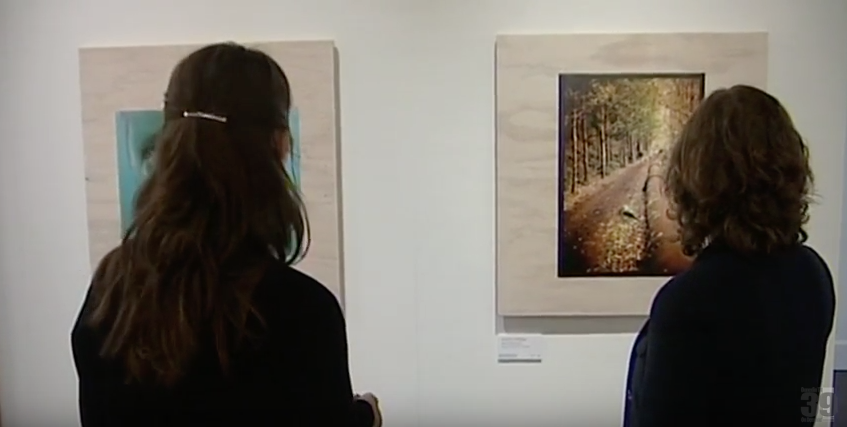
Source: VCUarts ("B.F.A. Alumna in New Zealand to Tackle Climate Change," July 20, 2016)
Sara Dean (B.F.A. ’01) and her colleague Beth Ferguson are traveling to New Zealand’s Otago Museum where they are taking a community approach to tackling issues resulting from climate change. Dean is an assistant professor in design at the California College of the Arts.
From the Otago Museum’s website:
"Climate Kit, a project by international artists Sara Dean and Beth Ferguson, will call the Otago Museum home for the next month. It has been produced in partnership with ZERO1 American Arts Incubator, the U.S. Department of State’s Bureau of Educational and Cultural Affairs and the U.S. Embassy in Wellington.
Climate Kit is a collection and exhibition of fieldwork methodology for the Anthropocene, with designers, artists, scientists, and citizens from around the world invited to submit a tool to add to it. These tools will be compiled into a series of Climate Kits exploring the changing relationship between design and climate. Together they will tell stories of working in changing environments, modes of practice, and measurements of change in the fields of climate science, urban design, product development, and everyday life.
The Otago Museum will host the ZERO1 American Arts Incubator workshop between 16–22 July – people interested in science, art and design are invited to participate. As a result of the workshop, Climate Kit will distribute four small grants to local teams for public projects incorporating urban, environmental and technological responses to climatic conditions in New Zealand."
Following the workshop, the finished projects will be included in a Museum exhibition which will open on Saturday 6 August.
Image: Still from Channel 39 Broadcast, Dean pictured right; full video below.
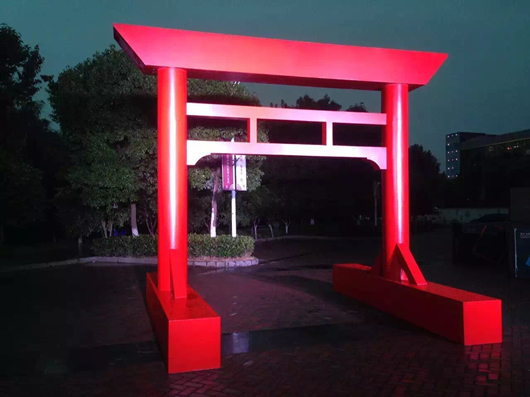
For the past three weeks, American public artist John Craig Freeman has been teaching Wuhan citizens about a new digital media art form called Augmented Reality. This art form creates virtual experiences that can only be viewed by using an app on a smartphone or tablet.
The American Arts Incubator Program is an international artist exchange initiative of the U.S. Department of State’s Bureau of Educational and Cultural Affairs and implemented by ZERO1, a non-profit organization based in San Jose, California. The goal of the exchange is to engage local citizens through public art projects. Local partners K11 Art Foundation and the U.S. Consulate General in Wuhan cooperated to bring this experience to Wuhan citizens.
Speaking at the “Portal to an Alternate Reality” exhibition at the K11 art village, U.S. Consul General Joseph Zadrozny stated that art “was a fabulous way for people to get to know each other and share thoughts, ideas, and experiences.” He emphasized that Art Incubator Program would live on beyond the departure of John Craig Freeman, as the four project teams hope to continue their work and share this exciting new art form with the rest of Wuhan. Consul General Zadrozny noted the Art Incubator, with American partner ZERO1 based in San Francisco, was another link between Optic and Silicon Valley.
The “Portal to an Alternate Reality” exhibition featured the augmented reality works of four groups of Wuhan citizens that participated in Freeman’s week long workshop in April. The digital augmented reality experiences were viewed through the backdrop of a physical four meter tall gateway Freeman designed and named the “Portal to an Alternate Reality”.
The enthusiastic team members guided guests to view their digital art through tablets. Two groups created virtual experiences that brought to life a couple of Wuhan’s old transportation hubs, the Dazhimen Railway Station in Hankou, and the Nanhu Airport in Wuchang. Meanwhile, a third group depicted images of the vibrant life at Wuhan’s lakes and ponds to highlight the disappearance of many of these waterways due to development. A fourth group’s work was based on some of the gateways to Wuhan’s leading universities.
The portal itself will remain on display outside the K11 art village through May 15. Visitors can come and download the necessary app on smart phones and view the augmented reality artwork.